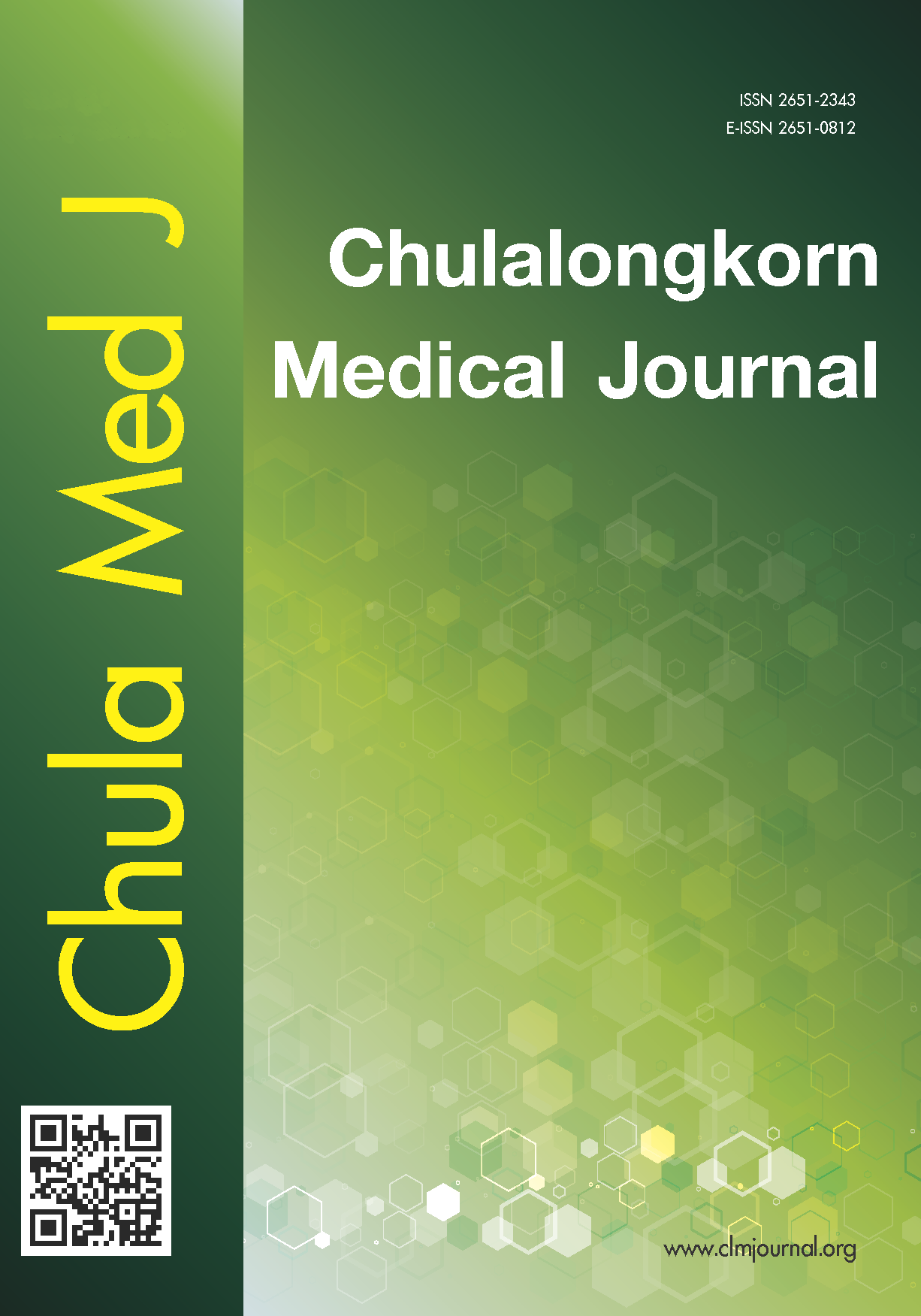Combination of a non-ablative 1,927 nm thulium fiber fractional laser and autologous platelet-rich plasma in treatment of male androgenetic alopecia: A pilot study
Main Article Content
Abstract
Background: Platelet-rich plasma (PRP) is composed of multiple essential growth factors which can stimulate
hair growth by promoting cell proliferation, prolonging cell survival and the anagen phase of hair follicles.
Fractional laser can create proper wounding which results in subsequent platelet activation and might promote hair growth. Nevertheless, clinical trials related to the efficacy and safety of the combination of fractional laser and PRP have not been established.
Objectives: To investigate the efficacy and safety of the combination of non-ablative fractional laser and
platelet-rich plasma for the treatment of male androgenetic alopecia (AGA).
Methods: A total of nine men were recruited for a pre- and post- treatment study. Three sessions of fractional
1,927 nm Thulium-doped fiber laser (Lasemd, Lutronic Inc, South Korea) followed by PRP injections on the
affected area were performed at 1-month intervals. Non-activated PRP was prepared using a Ycellbio-kit (Ycellbio Medical Co., Ltd., South Korea). Hair growth was evaluated by using: (i) standardized global photographs; (ii) hair mass index (Hair check systemR); (iii) target area hair counts (Trichoscale, Fotofinder); and, (iv) patient selfassessment questionnaires at baseline, then 3 and 6 months after the last treatment.
Results: Nine men with Norwood-Hamilton classification of grade II-IV, and a mean age of 41.3 years old (range 32 - 55) completed the study. At 6 months after completing the three treatment sessions, the terminal hair density significantly increased from baseline by 28.1% (99.1 to 127 = 27.9 hairs/cm2, P = 0.011). The increased percentage of total hair density was 9.7% (149.7 to 164.2 = 14.5 hairs/cm2, P = 0.015). The hair mass index was increased from baseline by 26.4% (16 to 20.2, P = 0.024). The global photography showed improvement in almost all patients: 3 moderate (41 - 70%); 4 slight improvement (1 - 40%) and 2 no change as compared to baseline. The treatment was fair tolerated and the mean visual analog scale (VAS) for pain was 0.8 (0 - 2) and 4.2 (2 - 6) for laser treatment and PRP injections, respectively. Adverse effects were transient erythema and a mild burning sensation on the treated areas.
Conclusion: A combination of a 1,927 nm fractional Thulium-doped fiber laser and PRP is considered safe, and
an effective strategy for the treatment of male AGA. However, to determine the efficacy of this combination
therapy, larger sample sizes and longer follow-up durations, randomized, placebo-controlled trials are suggested.
